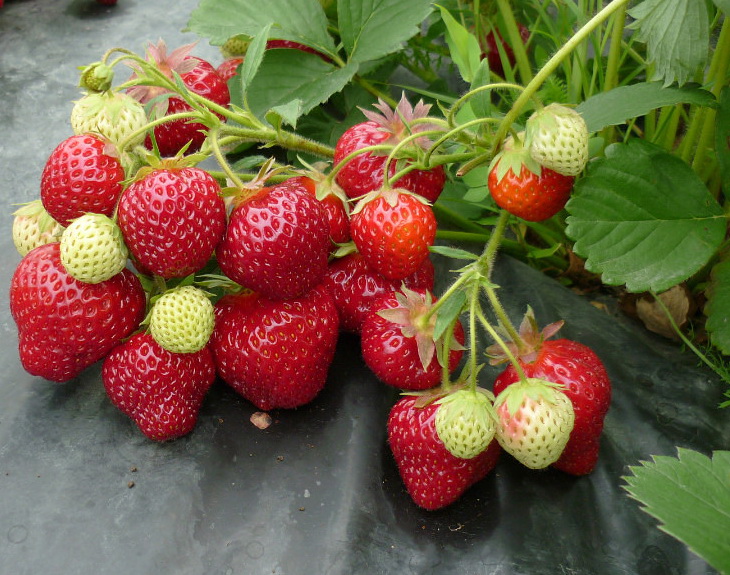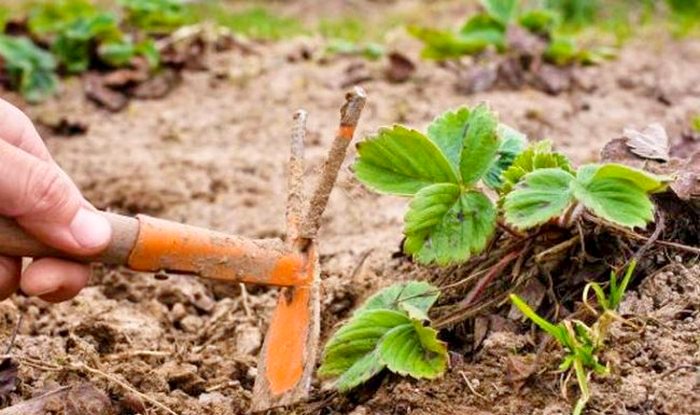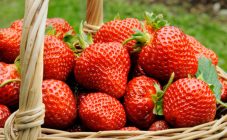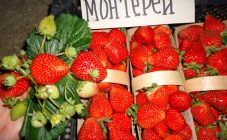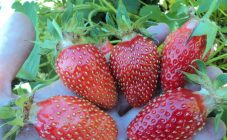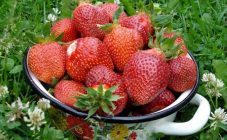Content:
The crown strawberry belongs to garden berries and is famous for its rich harvest and excellent taste. With proper care, you can harvest the whole year by growing berries in a warm place. The main features of the crown strawberry and a description of the variety are presented below.
The history of the creation of the variety
The Korona strawberry was created in 1972 by specialists from the Institute for the Breeding of Horticultural Crops in Wageningen, Holland. The progenitors of the variety are Tamella and Induka strawberries. The berry got its name due to its unusual crown-shaped foliage. The second name is Fragaria ananassa.
Since the climatic conditions of the Netherlands are similar to the European regions of Russia, the variety has taken root well in the middle zone of the country and calmly withstands frosts down to -20 degrees.
Description of the variety
The crown is a remontant plant that bears a crop 2 times per season. It is medium early, since on average fruiting occurs in mid June and ends in early August. One strawberry bush yields up to 2 kilograms of berries.
The variety perfectly tolerates frosts and all fungal diseases.
Each berry has a conical shape and is colored bright red. The pulp is especially sweet and juicy, there is a pronounced aroma. However, it is very soft and therefore difficult to transport or freeze. It is conical and regular in shape. The color can go up to dark red. Has a dense and delicate structure, without voids. It is suitable for family use, making dessert dishes.
Each bush is compact, has large concave leaves with a glossy bloom. It is located low, but the fruits do not contact the ground and remain dry without being damaged by this gray mold. The multi-flowered peduncles of the plant have a strong and powerful structure, so they can easily withstand ripe berries and not bend over from their weight.
Pest and disease resistance
One of the advantages of the variety is that it is very resistant to powdery mildew and verticillium disease. However, strawberries often suffer from gray rot, red root rot, and white spotting. These diseases destroy her very quickly.
In addition to diseases, it is attacked by birds that like sweet berries. The scarecrow can scare them away. In addition, it is often eaten by ticks with nematodes and weevils. They make the harvest meager.
Agrotechnics
Next, consider the following sections of agricultural technology: planting, care and reproduction.
Landing
Strawberry Corona loves fertile soil, sufficiently sunlit and protected from strong winds. Groundwater should be no higher than 1 m from the surface. The plant must be planted with four or five leaves when a long root has grown (up to 10 centimeters).
Before planting, the soil is dug up and fertilized with manure, potassium chloride, ammonium nitrate and superphosphate. The distance between the planting holes should be approximately 30 centimeters, and between the rows - half a meter. Each hole requires 1/2 liter of water. After watering, it is required to allow the earth to absorb moisture.Only then can sprouts be planted in the ground. Then they must again be watered and mulched with peat fertilizer.
Care
The plant is unpretentious in care. It is required to water it well with warm water, so that moisture accumulates as much as possible near the roots, and also to monitor the health of leaves and roots. It is best to organize drip irrigation.
In order for strawberries to give a large and regular crop, it must be fertilized with humus, nitrogen, potassium and phosphate fertilizers. The collection of berries should be carried out in baskets or buckets with holes. Thus, you can achieve maximum ventilation of the berries and their safety.
Reproduction
Strawberries begin to multiply in summer and spring. It shares shrubs, seeds, and tendrils. If it is decided to organize reproduction with antennae, they need to be placed along the edges of the beds. After 14 days, roots will begin to appear. When they appear, their ends should be cut. Further, the bushes are separated and planted in new holes.
By dividing the bush, the crown reproduces in the spring. To propagate it in this way, you need to take a good and healthy 1 or 2 year old bush, dig it out with a lump of earth. Then, with his hands, you need to divide it into two or three parts and place each part in the ground. In this case, each divided part must have both roots and leaves.
Advantages and disadvantages of the variety
Like any strawberry variety, Corona has a number of advantages and disadvantages. The advantages are:
- Winter hardiness;
- Powdery mildew resistant;
- Long fruiting time;
- A bountiful harvest;
- Great taste and aroma;
- Aesthetic look.
The disadvantages include a delicate structure, the inability to transport the berry while maintaining an excellent appearance, susceptibility to disease, drought intolerance, tight-fitting leaves to the berries. In addition, according to the reviews of summer residents, the Crown cannot be grown for sales, but it is perfect for home and summer cottages.
Strawberry Crown, or garden strawberry, is a picky plant with large, sweet and fragrant berries. It is suitable for growing in a garden in the country or greenhouses for yourself, but not for sales. She has more advantages than disadvantages.
